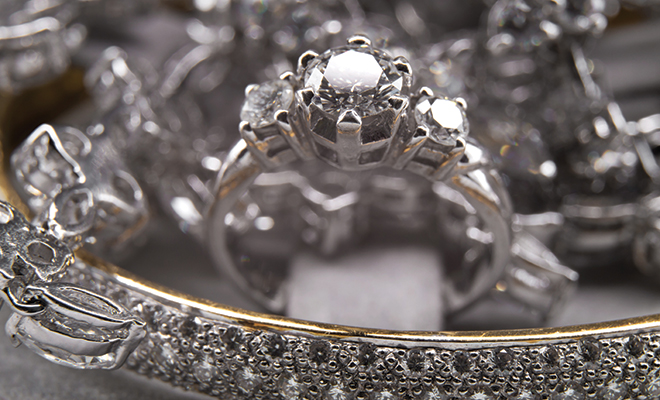
What’s in My Jewelry?
Throughout history, bright shiny metals have been used as jewelry to adorn the human body. The colored metals, gold or copper, and the white or silver metals, silver, zinc and nickel, have been treasured for centuries.
Wars were fought to obtain lands containing ores. While it wasn’t a war, in the U. S., the California gold rush was an example of gold fever. Gold was also used in religious ceremonies to honor the gods. In Colombia, the Muiscas claimed that the sun god assumed power with a huge offering of gold to the gods. This story was dismissed as myth until 1969 when a gold raft supporting the story was discovered in Pasca. This gold raft is housed in the Banco de la Republica’s El Museo del Oro in Bogotá, Colombia. The museum contains the largest collection of pre-Columbian gold artifacts in the world, over 50,000 pieces.
What attracts us to gold? There are several reasons gold is so popular. It is elusive and, therefore, rare and expensive. It is malleable and ductile, making it an easy metal to work with. It can be made into three distinct colors—gold, rose gold and white gold. In fact, there are red gold containing large amounts of copper in Morocco and a green-hued gold that round out the colors that can be made from yellow gold.
Pure gold is 24 carats, yellow and too soft to retain its shape. Pure gold is alloyed with other metals to use in jewelry; 14K gold is an alloy made of 14 parts pure gold and 10 parts other metals such as copper, silver, zinc and nickel.
Pure gold is yellow, but other golds can be created by increasing the amount of different colored alloys. Rose or pink gold is created by increasing the copper-colored alloys and decreasing the silver-colored alloys. The pink hue of rose gold intensifies with age.
White gold is made by increasing the silver-colored alloys of zinc, silver and nickel and decreasing the yellow-colored alloys, or copper. Nearly white in color, 14K white gold contains as much gold as 14K yellow gold. Even white gold contains a very faint hint of yellow unless it is plated with rhodium. White gold has the look of silver but tolerates hard wear and resists tarnish.
Silver is a popular metal used for jewelry that is plentiful in the United States. The Comstock Lode of Nevada was the largest mine in the U. S. for many years, but the Coinage Act of 1873 demonetized silver and caused production to be reduced. Alaska, Nevada and Idaho are the biggest domestic producers of silver today.
Silver can be formed into jewelry and takes a brilliant shine. Because the alloy is purer than gold, the alloy is softer than gold. The alloy used for silver is 92.5 percent silver, but it is more difficult for the craftsman to work with. Since silver is less expensive than gold, it is more practical for large pieces. A disadvantage of silver is that it will tarnish as it interacts with sulfur in the air.
Platinum is about the same price as gold and will not tarnish. It is very hard and difficult to work with. The new metal is silver, but as it ages, it turns to a dull grey. Jewelers can polish platinum so that its original shine is restored. Presently, the alloy is 95 percent platinum but prior to 1975, the exact amount of platinum in the alloy was not regulated, and thus, uncertain. Diamonds are often set in platinum to secure the stones yet the rest of the ring may be gold.
Titanium is a strong, light metal that resists corrosion. Its major uses are in aerospace and spacecraft due to its strength. Previously, titanium was used with other metals because it could be anodized with other bright colors, but more and more it is being used as a white-colored jewelry metal.
Copper is an orange-red metal used in jewelry. The ancient Egyptians first created alloys using copper. Bronze is created by mixing copper and tin. Brass is a combination of copper and zinc. Copper is valued by many for its healing properties; pure copper, 99.9 percent, can be absorbed through the skin. Wearing bracelets, necklaces, rings or earrings allows the mineral salts to enter the body. Some believe that copper jewelry can relieve the symptoms of arthritis and increase circulation. Copper may turn the skin green as well as the jewelry piece as the metal interacts with the body’s perspiration. Some like this as it indicates the copper is working with their body. The green chelates come off with soap and water. The jewelry can be cleaned with lemon juice or ketchup. Use a soft brush and rinse well to restore shine. ■
Sources: jewelrygenius.com, jewelryinfoplace.com and reesjeweller.co.uk.







